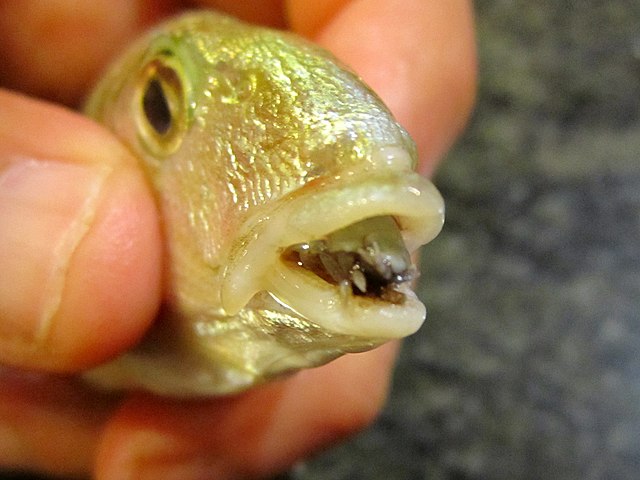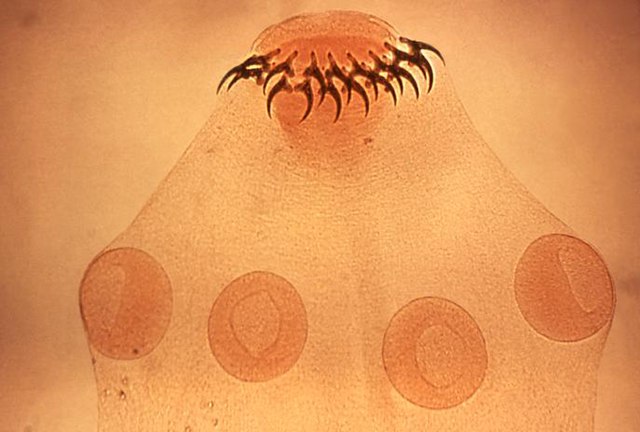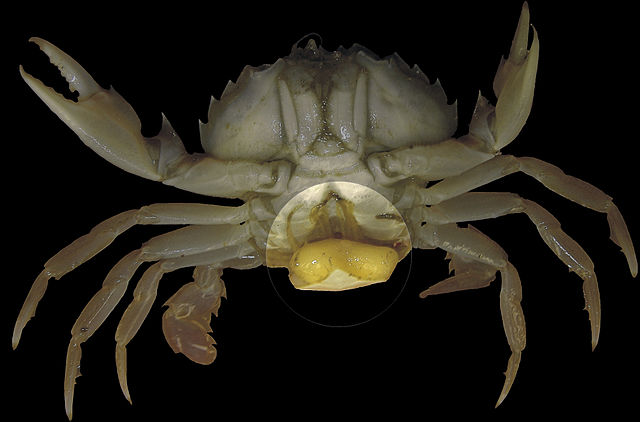A hyperparasite, also known as a metaparasite, is a parasite whose host, often an insect, is also a parasite, often specifically a parasitoid. Hyperparasites are found mainly among the wasp-waisted Apocrita within the Hymenoptera, and in two other insect orders, the Diptera and Coleoptera (beetles). Seventeen families in Hymenoptera and a few species of Diptera and Coleoptera are hyperparasitic. Hyperparasitism developed from primary parasitism, which evolved in the Jurassic period in the Hymenoptera. Hyperparasitism intrigues entomologists because of its multidisciplinary relationship to evolution, ecology, behavior, biological control, taxonomy, and mathematical models.
A hyperparasitoid wasp (Pteromalidae) on the cocoons of its host, a braconid wasp (subfamily Microgastrinae), itself a koinobiont parasitoid of Lepidoptera
A hyperparasitic microsporidian, Nosema podocotyloidis, a parasite of a digenean, Podocotyloides magnatestis, itself a parasite of the fish Parapristipoma octolineatum
Parasitism is a close relationship between species, where one organism, the parasite, lives on or inside another organism, the host, causing it some harm, and is adapted structurally to this way of life. The entomologist E. O. Wilson characterised parasites as "predators that eat prey in units of less than one". Parasites include single-celled protozoans such as the agents of malaria, sleeping sickness, and amoebic dysentery; animals such as hookworms, lice, mosquitoes, and vampire bats; fungi such as honey fungus and the agents of ringworm; and plants such as mistletoe, dodder, and the broomrapes.
A fish parasite, the isopod Cymothoa exigua, replacing the tongue of a Lithognathus
Head (scolex) of tapeworm Taenia solium, an intestinal parasite, has hooks and suckers to attach to its host
The parasitic castrator Sacculina carcini (highlighted) attached to its crab host
Human head-lice are directly transmitted obligate ectoparasites






